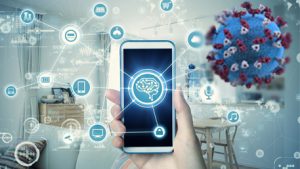Using Digital Technologies in Precision Public Health: COVID-19 and Beyond
Posted on by With the global spread of COVID-19, there is a proliferation of scientific information and publications that use novel approaches such as genomics and precision health tools (e.g., big data, wearables, and digital devices) in surveillance and epidemiologic investigations. Could these new technologies provide added value to traditional approaches?
With the global spread of COVID-19, there is a proliferation of scientific information and publications that use novel approaches such as genomics and precision health tools (e.g., big data, wearables, and digital devices) in surveillance and epidemiologic investigations. Could these new technologies provide added value to traditional approaches?
In the past, we have written about the emergence of genomics and other precision health technologies as tools in the prevention and treatment of a variety of diseases. We frequently raised attention to the need for evaluation of evidence on validity and utility of technologies before widespread implementation and the need for careful implementation to benefit population health. Two recent commentaries in Nature Medicine discuss the promise of digital tools during a pandemic, as well some of the ethical and societal issues that need to be addressed to make their promise a reality for precision public health in the longer term. The first commentary by Ting et al. explores the potential application of four inter-related digital technologies (i.e., the IoT (internet of things), big-data analytics, AI (artificial intelligence) and blockchain) to augment two traditional public-health approaches for addressing COVID-19: (1) monitoring, surveillance, detection, and prevention of COVID-19; and (2) mitigation of the impact to healthcare. In terms of surveillance, the authors gave examples on how the IoT can provide a platform that allows public-health agencies access to data for monitoring COVID-19. These include real time tracking and live updates in various online databases in multiple countries.
Big data can also provide opportunities for performing modeling studies of viral transmission and for guiding policies to enhance preparedness in a more expedient manner. Examples include modeling of disease activity, potential growth and areas of spread, and modeling of the preparedness and vulnerability of countries in fighting a disease outbreak.
Moreover, digital technology can enhance public health education and communication messages. In the United States, the COVID-19 Task Force partnered with Apple, Inc. to develop an app that provides CDC recommendations including guidance on social distancing and self-isolation, how to closely monitor symptoms, recommendations on testing, and when to contact a medical provider.
AI and machine learning can also improve the detection and diagnosis of COVID-19. Algorithms can be developed to help triage patients in clinical or emergency room settings by levels of severity and can facilitate the discovery of new COVID-19 therapies or vaccines.
Addressing the direct impact of COVID-19 is crucial. At the same time, it is also important to maintain core and critical medical and public health services. For example, health systems can use digital technologies to deploy ‘virtual clinics’ using telemedicine. AI can also be used in triage systems to alleviate the clinical load of physicians (e.g., online ‘chat bot’, phone-based software).
The second commentary by Ienca et al. addresses the need to deploy digital technologies responsibly. The authors discussed issues of privacy and public trust, and the need to identify best practices to develop responsible data-collection and data-processing standards globally. For example, the reliance on digital data sources (e.g. mobile phones and other digital devices) can have particular value in the tracking of novel outbreaks, and it also raises privacy and data-protection concerns. Ethical data collection practices may dictate limited collection of what is necessary to achieve a specific public-health objective. In short, control of pandemics can require unusual steps that must be measured and limited to the scope of the outbreak to prevent overreach.
A strong, established, scientific foundation of the applications of digital tools and technologies for public health emergencies is paramount. In the long run, digital biomarkers and artificial intelligence-based algorithms require evaluation of analytic validity, clinical validity, and utility to provide maximum benefit for acute public health response, just as genomic tests that followed from the Human Genome Project continue to undergo such assessment. Ultimately, the successful application and evaluation of digital tools to address a major global health threat, such as COVID-19, could also provide an important path for applying such technologies more effectively for future outbreaks and in other areas of health care and public health.
Posted on by


